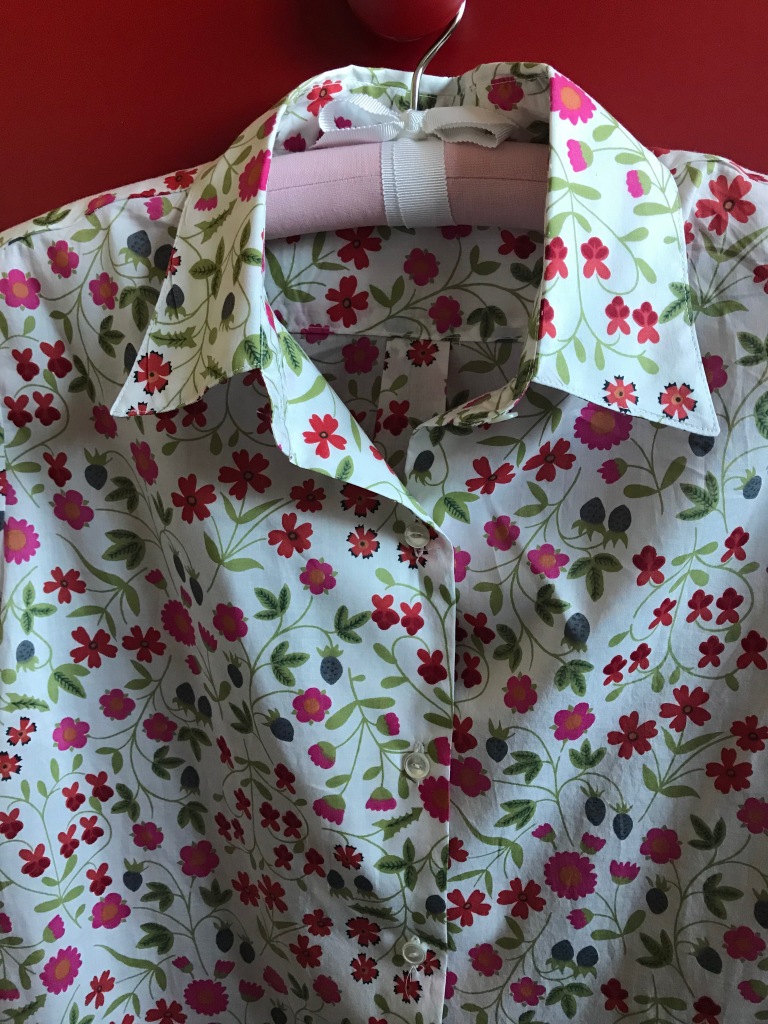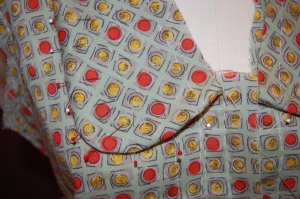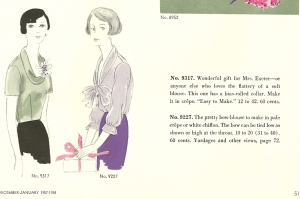Some blouses are worn A LOT. Those are everyday blouses, and I have quite a few of those (with more to come, I am sure!) And some blouses are worn infrequently, but equally loved for their unique properties. These would include exceptional fabric, refined or formal appearance, limited wearing opportunity, or their ability to make a statement. The blouse I most recently completed has all those properties.
This deep pink silk charmeuse Jacquard has been in my fabric closet for over ten years, having been purchased at Britex Fabrics when I started sewing for myself again, way back when. Its color, and the polka dot woven motif, both personal favorites, drew me to it. A couple of years ago, after purchasing another piece of silk – a printed silk twill – I paired the two fabrics together and added them both to my sewing queue. The skirt may have to wait until next year, but the blouse earned a spot in 2022’s sewing agenda.
I used a blouse pattern which I have made once before. From 1957, this pattern is timeless with its elegant collar (which looks good lying flat or propped up around the neck), petite French cuffs and feminine three-quarter length sleeves. I suppose in 1957, this style blouse may have been considered a casual piece, which the illustrations on the pattern envelope suggest. I saw this blouse as dressy, however, and that is how I have interpreted it.
One of the details which make this blouse so flattering to wear is the waistline open-ended darts, easily visible above. They minimize the bulk when the blouse is tucked inside its skirt and add a lovely billow effect above the waist. I made these darts a bit shallower than the pattern indicated. When making these darts, I secured their upper edges by pulling the thread tail on one side to the other side so that I had the ability to knot those threads with three tight loops. For those of you who have made a classic French jacket, this is the same method used to secure the quilting stitches at the end of the columns. The photo below helps to show this.
Buttons are such fun to select for a blouse like this. I have had these vintage white pearl buttons for some time, and no doubt they were waiting for this project. When the skirt is made at some point, the three-lobed profile will play off the designs in the silk twill. But, more than that, I needed something to act as a foil for the polka-dotted field. More “round” would have been fine, but not exciting. Additionally, these buttons are a bit bigger which helps them hold their own on that deep, rich, pink silk.
Being the ‘statement” blouse that it is, I doubt I will be wearing this blouse casually. But I’m betting/hoping I will find good reason to wear it not infrequently to one or another tony event.















































































































